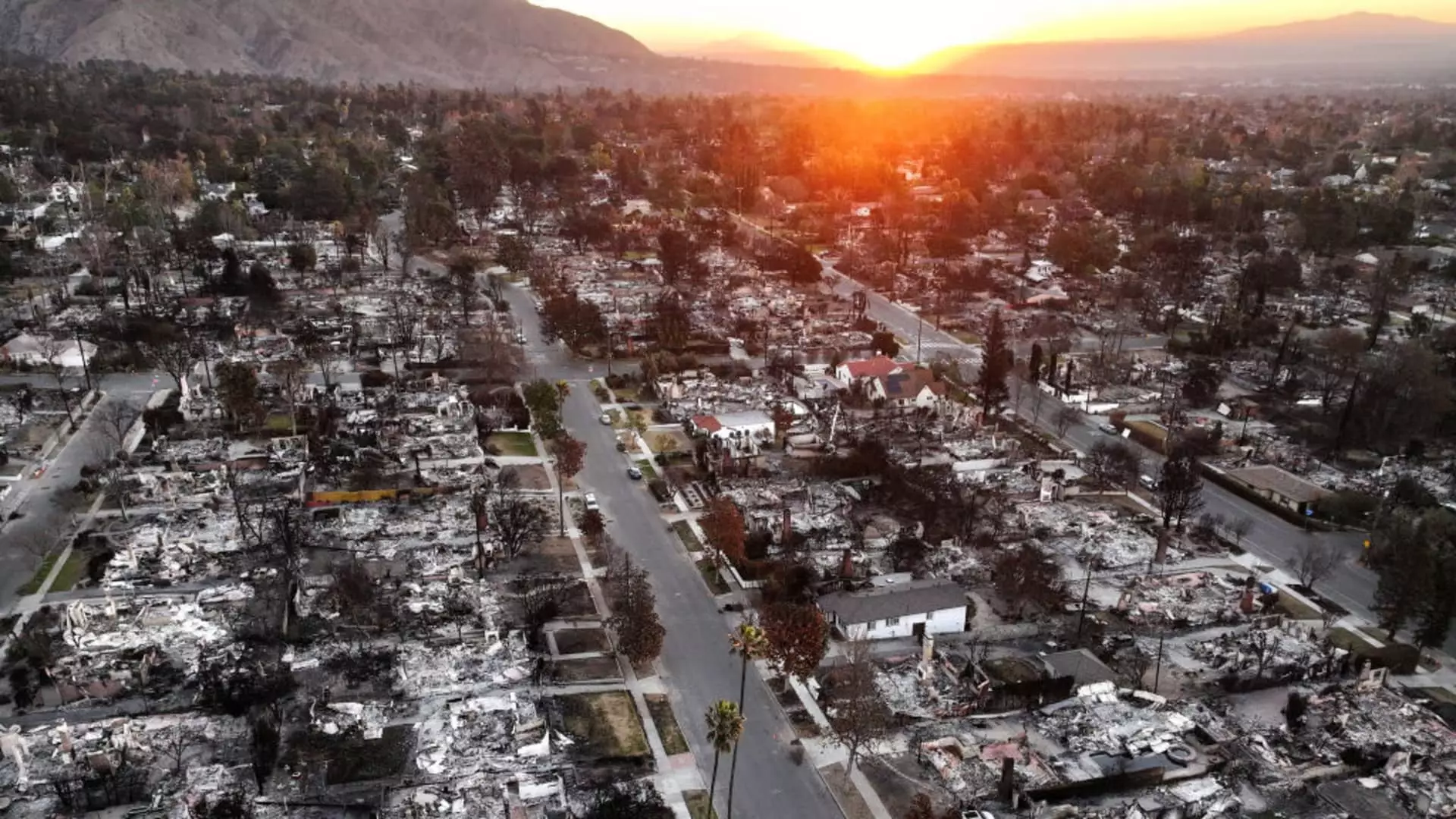The devastation from the recent wildfires in Los Angeles has left families reeling and communities grappling with the arduous task of recovery and reconstruction. In neighborhoods such as Pacific Palisades, where the flames reduced entire homes to ash, the emotional and financial repercussions are profound. One family’s story, that of Dr. Damon Raskin and his family, exemplifies the mixture of despair and determination that characterizes this new chapter for many Angelenos.
The experience of the Raskin family, who lost their home unexpectedly, captures the essence of the struggle confronting many after such devastating wildfires. While the physical destruction is apparent, the emotional toll of losing a home—often filled with memories—is immeasurable. Despite their shock and sense of loss, the family has made a resolute decision: they wish to rebuild. This determination reflects a broader theme among displaced families, highlighting the resilience of individuals and communities in the face of disaster. However, this resolve is just the beginning of what will inevitably be a lengthy and challenging journey.
As thousands of structures have been damaged or destroyed, the task facing California’s homebuilding industry and local government is daunting. An estimated 12,000 homes are in need of significant repair or full reconstruction, with costs projected to reach a staggering $40 billion. The rebuilding process, however, goes beyond simple construction. Safety concerns, especially regarding debris removal and the restoration of buildable land, complicate efforts to restore communities. Tom Grable, an executive in the homebuilding sector, emphasized the challenges associated with returning devastated lots to a state suitable for construction, underscoring the need for a comprehensive cleanup strategy.
California Governor Gavin Newsom and Los Angeles Mayor Karen Bass have recognized the urgency of the situation and have taken steps to expedite recovery efforts. They have issued executive orders aimed at streamlining regulatory red tape that often hampers quick action in the aftermath of such disasters. The suspension of environmental regulations aims to facilitate faster construction. This has sparked discussions about the balance between rapid recovery and ensuring safety, highlighting the complexities of disaster response in a state still grappling with the effects of climate change and its associated risks.
Homeowners like Dr. Raskin are now faced with the practicalities of rebuilding. Each of them must navigate a maze of builders, architects, and insurance providers. The emphasis is shifting towards the incorporation of fire-resistant materials and designs, a necessity that did not factor into homes built prior to stringent building codes. California’s updated building regulations, which include specifications for fire-resistant construction in vulnerable areas, signal a move towards safer, more sustainable homes. Yet for families like the Raskins, the journey of selecting appropriate materials begins amid ongoing feelings of loss and confusion.
The rebuilding efforts are not solely about replacing what was lost, but also about addressing systemic vulnerabilities. The homebuilding industry, while poised to respond to the renewed demand for housing, faces significant challenges including resource shortages and supply chain disruptions. Many established construction firms are not focused on rebuilding individual homes, often opting instead for larger multi-family development projects. This leaves smaller, local builders to fill the gap—companies that are deeply familiar with the community and its architectural nuances.
Insurance claims become another critical facet of recovery. The process for many homeowners is often fraught with complications, especially given the difficult market conditions. The rise of the California FAIR Plan, which serves as a safety net for high-risk residents, provides a glimpse into the challenges of obtaining adequate coverage amid rising costs. With many traditional insurers withdrawing from the market due to the frequency of claims, homeowners are left navigating a complex landscape where getting sufficient coverage feels more precarious than ever.
For the Raskins, even though their FAIR Plan policy may facilitate some recovery, it leaves significant gaps such as personal property losses. This highlights a growing concern for many affected families: the disparity between home rebuilding costs and the compensation offered through insurance. As Dr. Raskin continues to work with public adjusters to maximize his claim, the looming reality of financial strain casts a shadow over their future.
While the road to recovery for families like the Raskins is undoubtedly daunting, within the challenges lies an opportunity for community rebuilding and resilience. The spirit to rebuild is not merely about constructing houses but also about restoring a sense of belonging and community connection. As families grapple with their new realities—many now living in temporary housing—strengthening ties and supporting one another will be key to moving forward.
The long-term recovery from the recent wildfire catastrophes will require not just perseverance from the individuals and families affected, but also a collective effort among builders, state officials, and community members. While the process may take years, the journey embarked upon by the Raskins and countless others is a testament to the resilience of the human spirit in the face of adversity.

